Best Companion Plants For Tulips To Create A Stunning Spring Garden
Best Companion Plants for Tulips to Create a Stunning Spring Garden
Tulips are one of the most popular spring bulbs, and for good reason. They come in a wide variety of colors, shapes, and sizes, and they can add a touch of beauty to any garden. But tulips can be even more stunning when they're planted with other companion plants.
The right companion plants can help to complement the tulips' colors, extend their blooming season, and even help to hide their fading foliage. Here are some of the best companion plants for tulips:
- Crocus: Crocus are small, early-blooming bulbs that come in a variety of colors, including purple, white, and yellow. They're a great choice for planting with tulips because they bloom at the same time, and their small stature helps to fill in the gaps between the tulips.
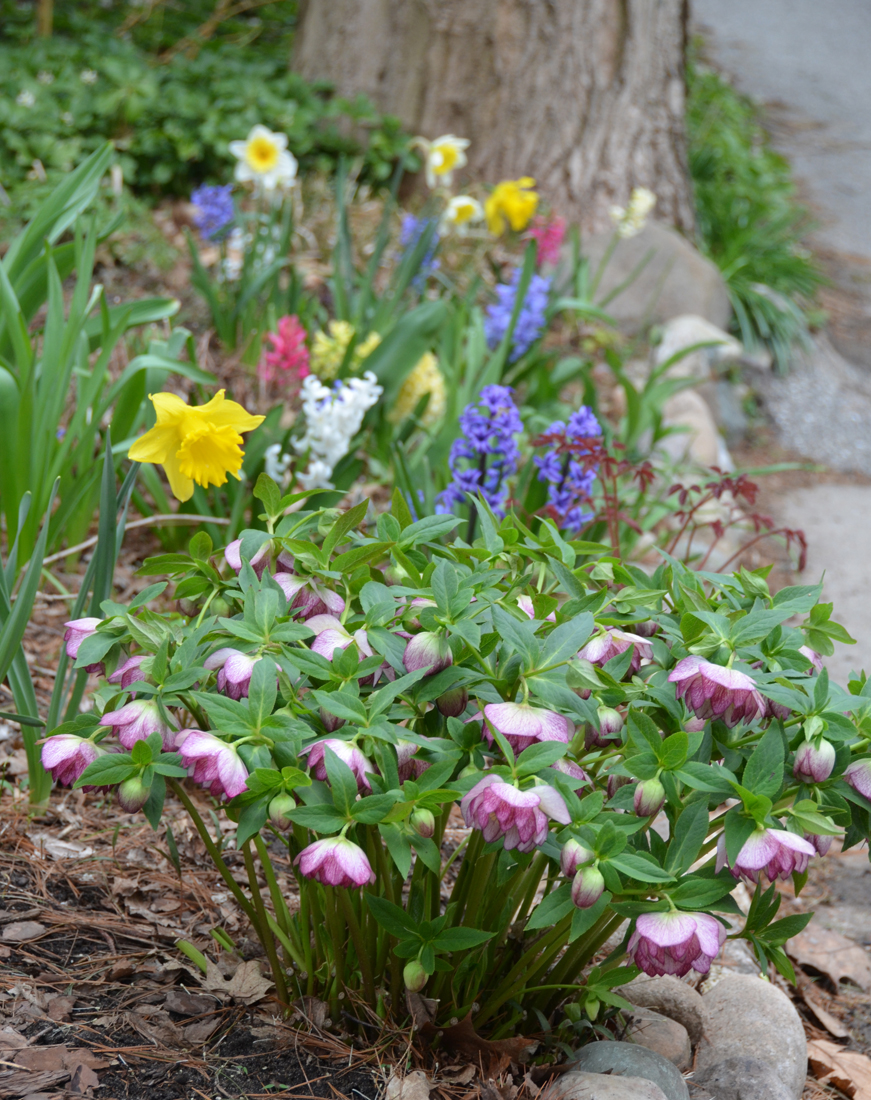
- Grape hyacinth: Grape hyacinths are another early-blooming bulb that comes in a variety of colors, including blue, purple, and white. They're a great choice for planting with tulips because they have a similar flower shape, and their sweet fragrance can help to attract pollinators.
- Daffodils: Daffodils are a classic spring flower that comes in a variety of colors, including yellow, white, and orange. They're a great choice for planting with tulips because they bloom at the same time, and their tall stature helps to add height and structure to the garden.

- Allium: Alliums are a type of onion that produces large, colorful flowers. They're a great choice for planting with tulips because they bloom at the same time, and their bold colors can help to add contrast to the tulips' delicate petals.

- Pansies and violas: Pansies and violas are low-growing, flowering plants that come in a variety of colors. They're a great choice for planting with tulips because they bloom at the same time, and their cheerful flowers can help to brighten up the garden.

- Shasta daisies: Shasta daisies are large, white daisies that bloom in the spring. They're a great choice for planting with tulips because they bloom at the same time, and their bright white flowers can help to highlight the tulips' colors.

- Zinnias: Zinnias are colorful annuals that bloom in the summer. They're a great choice for planting with tulips because they can help to extend the blooming season. Zinnias come in a variety of colors, so you can choose ones that complement the tulips' colors.

- Daylilies: Daylilies are perennial flowers that bloom in the summer. They're a great choice for planting with tulips because they can help to hide the tulips' fading foliage. Daylilies come in a variety of colors, so you can choose ones that complement the tulips' colors.
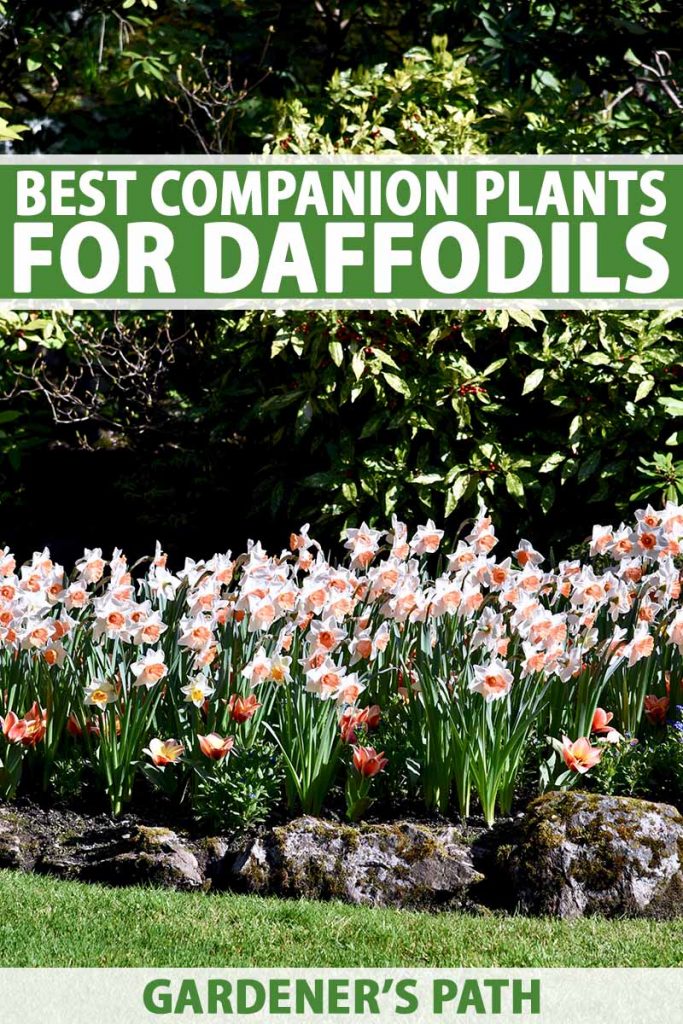
In addition to these companion plants, there are a few other things to keep in mind when planting tulips. First, tulips need full sun and well-drained soil. Second, tulips should be planted in the fall, so that they have time to establish their roots before the spring. Finally, tulips should be spaced about 6 inches apart.
By following these tips, you can create a stunning spring garden with tulips and their companion plants.
Tulips are a beautiful and popular spring flower, but they can be even more stunning when planted with companion plants. The right companion plants can help to extend the tulips' blooming season, add interest and color to the garden, and even help to deter pests.
There are many different companion plants that can be planted with tulips, but some of the best include:
- Crocus: These early-blooming bulbs add a touch of purple, white, or yellow to the garden before the tulips even start to bloom.
- Daffodils: These cheerful flowers bloom just after the crocuses, and they come in a variety of colors, including yellow, white, and orange.
- Allium: These onion-like flowers add a touch of drama to the garden with their tall spikes of purple, pink, or white flowers.
- Pansies: These cheerful flowers bloom in a variety of colors, and they can help to fill in the gaps between the tulips.
- Viola: These delicate flowers are similar to pansies, but they come in a wider variety of colors, including blue, purple, and black.
If you're looking for more information about tulip companion plants, I recommend visiting Gardenia Inspiration. This website has a comprehensive list of companion plants for tulips, as well as tips on how to plant and care for them.
FAQ of tulip companion plants
Question 1: What are some good companion plants for tulips?
Answer: There are many good companion plants for tulips, but some of the most popular include:
- Crocus: These early-blooming bulbs add a splash of color to the garden before the tulips come into bloom.
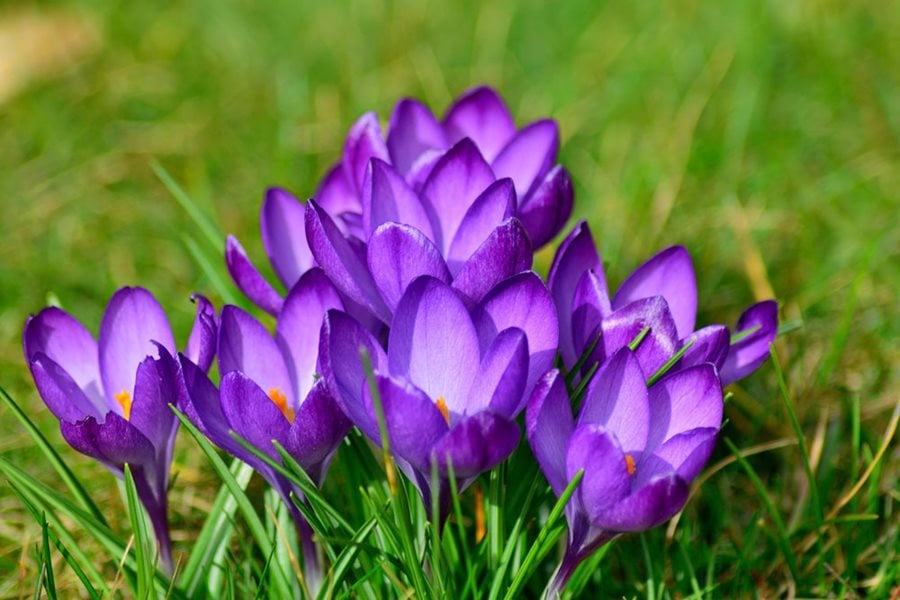
- Grape hyacinth: These fragrant bulbs bloom at the same time as tulips and come in a variety of colors.

- Aubrietia: This low-growing perennial blooms in shades of pink, purple, and white and helps to fill in the spaces between tulips.
- Arabis: This another low-growing perennial that blooms in shades of white, pink, and purple.
- Creeping phlox: This groundcover plant blooms in shades of pink, blue, and white and helps to keep the soil in place.
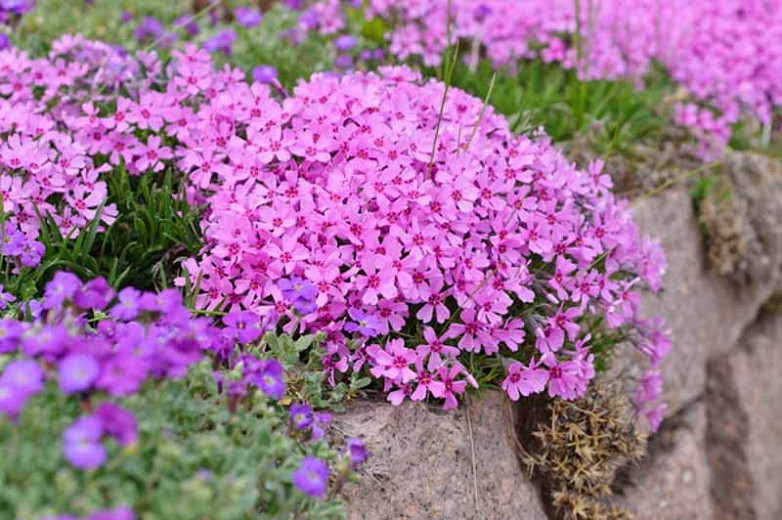
Question 2: What are some things to consider when choosing companion plants for tulips?
Answer: When choosing companion plants for tulips, there are a few things to consider, including:
- Bloom time: Companion plants should bloom at the same time as tulips or after tulips have finished blooming. This will help to extend the bloom time of your garden.
- Color: Companion plants can be chosen to complement the colors of the tulips or to create a contrasting effect.
- Height: Companion plants should be chosen to complement the height of the tulips. For example, low-growing companion plants can be used to fill in the spaces between tall tulips.
- Sunlight: Tulips need full sun, so companion plants should also be tolerant of full sun.
Question 3: How do I plant tulip companion plants?
Answer: Tulips and their companion plants can be planted together in the fall. When planting, follow these tips:
- Plant the bulbs in a sunny location with well-drained soil.
- Space the bulbs 4 to 6 inches apart.
- Cover the bulbs with 6 to 8 inches of soil.
Question 4: How do I care for tulip companion plants?
Answer: Tulips and their companion plants are relatively easy to care for. Once the bulbs are planted, water them regularly, especially during the first year. After the tulips have finished blooming, you can leave the foliage in place to help the bulbs store energy for next year. In the fall, you can cut back the foliage and add a layer of mulch to protect the bulbs from the cold.
Question 5: How can I prevent tulip diseases and pests?
Answer: Tulips are susceptible to a few diseases and pests, but there are a few things you can do to prevent them:
- Plant tulips in a healthy location with good air circulation.
- Rotate your tulip plantings every few years to help prevent diseases from building up in the soil.
- Inspect your tulips regularly for signs of pests or diseases.
- Treat any pests or diseases that you find promptly.
Image of tulip companion plants
- Arabis is a lovely flowering perennial groundcover to plant with your tulips. It has small, white flowers that bloom in spring, and it will help to fill in the spaces between your tulips.
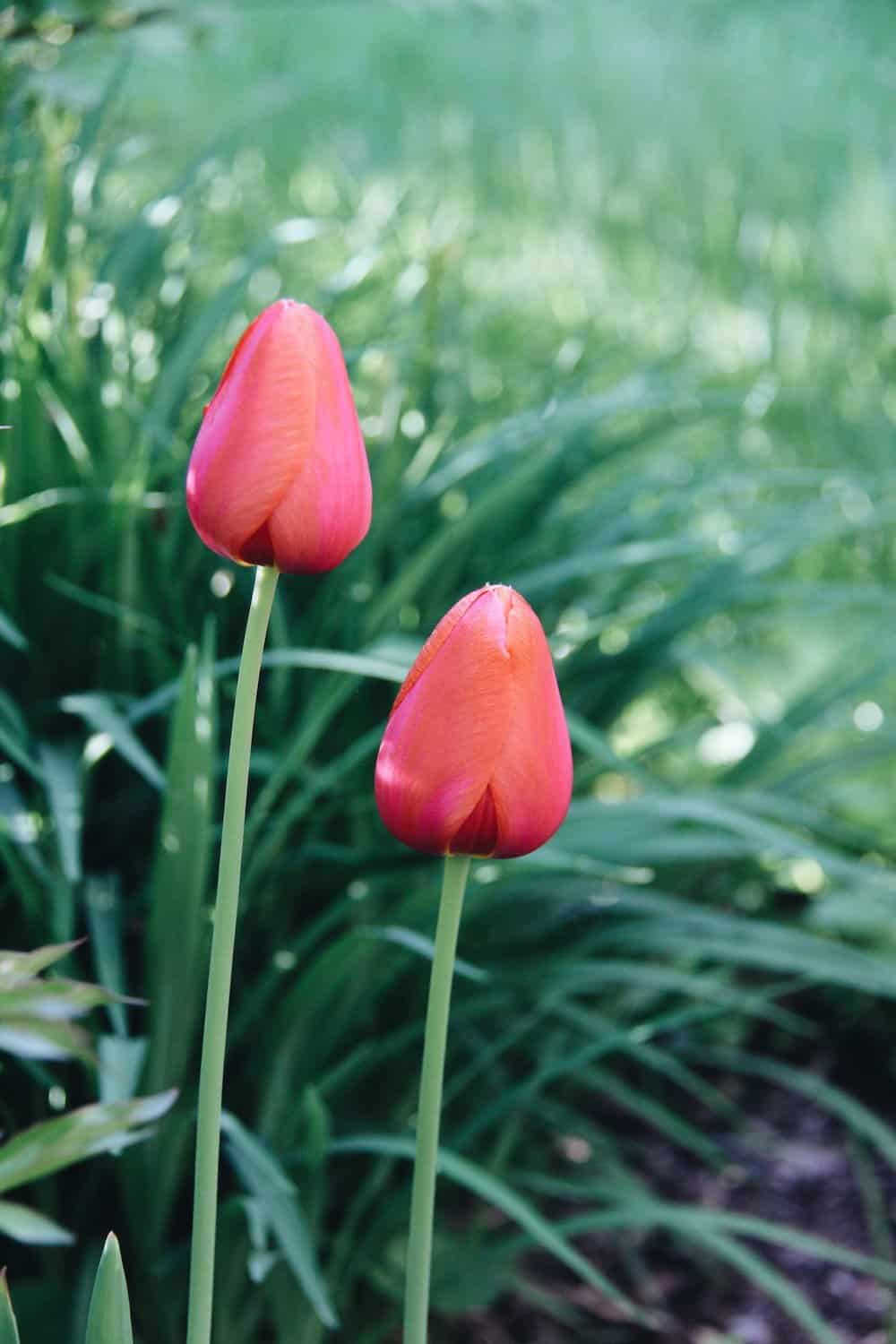
- Aubrieta is another great choice for a low-growing flowering perennial that blooms alongside your tulips. It has purple, pink, or white flowers that bloom in spring, and it is very easy to care for.
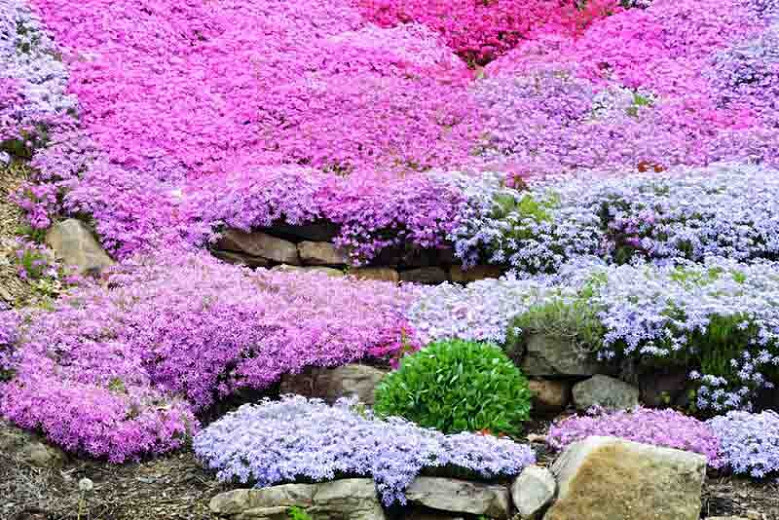
- Crocus is a small, spring-blooming bulb that is a great companion for tulips. It comes in a variety of colors, including yellow, purple, and white.

- Grape hyacinth is another small, spring-blooming bulb that is a great companion for tulips. It has fragrant, blue or purple flowers.
- Brunnera is a hardy perennial that has large, blue leaves and small, white flowers. It is a good choice for shady areas, and it will help to ground your tulips.
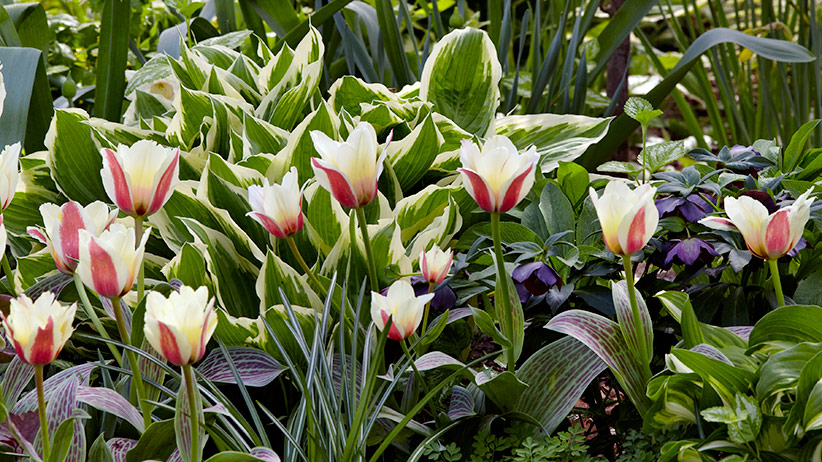
Post a Comment for " Best Companion Plants For Tulips To Create A Stunning Spring Garden"